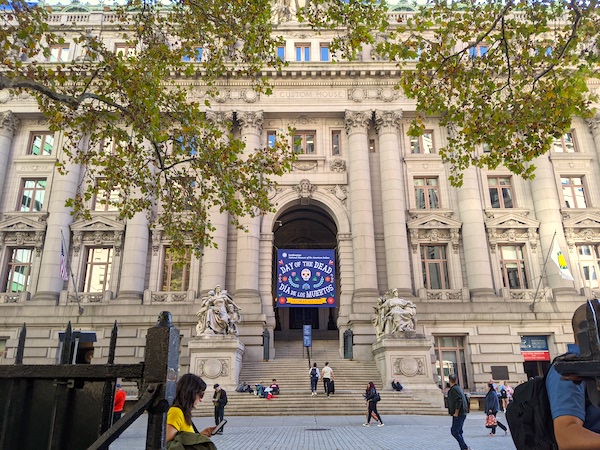オリンが長く関わっているボリス・ルリエ財団 (← クリック)での展覧会が ユダヤ遺産博物館(← クリック)であった。初恋の女性も、実母も姉妹もホロコーストで失くし、使い勝手の良い男という理由で、ボリスと実父は終戦までの年月をキャンプで働かされた。自由を得てニューヨークに渡る。日々襲ってくる筆舌し難い辛酸をなめた過酷な体験、それらを覚えている限り 描ききってやる、表現してやる、との固い決意がボリスを終生のアート活動に向かわせた。
博物館は、”ホロコースト;憎しみができること” と ”ホロコーストから生還した人々の顔;写真展” の三つのセクションに分かれており、涙無しには全てを見きれなかった。すべて、この地球上のものは繋がっているのに、どうしてこんなに易々と殺戮できるのだろう。(核の脅威も生物兵器も勿論)
帰りに、スミソニアン国立アメリカインディアン博物館 (← クリック)にも立ち寄ることができた。もともとこの大陸に居た先住者達の歴史を見ることができる。ボリス・ルリエ展もこちらの展観も実に重く深く考えさせられる。
The exhibition from Boris Lurie Art Foundation (← click) where Orin has been involved for a long time, was held at The Museum of Jewish Heritage (← click). Boris lost his childhood lover, mother and sisters in the Holocaust, however he and his father were selected by nazis to work in camps until the end of the war because they had good skills for work. Boris, then got free and moved to New York. Since then, his life was extremely hard and bitter, these harsh experiences that attacked him every day were too difficult to put into words.『As long as I can remember them, I will draw them out, express them! 』This determination pushed Boris towards his lifelong artistic career and activities.
The museum currently has three exhibitions, including “Nothing to do but to try” Boris Lorie, “Survivors: Faces of Life after the Holocaust by Martin Schoeller” and “The HOLOCAUST; what hate can do”. I couldn’t see them all without tears. Everything on this earth is connected, so how can it be so easy to slaughter? (Nuclear threats and/or biological weapons, of course)
On the way back, Orin and I were able to stop by the Smithsonian National Museum of the American Indian (← click). You can see the history of the original inhabitants of this continent. Both the Boris Lurie exhibition and this exhibition are really heavy and make me think deeply.

